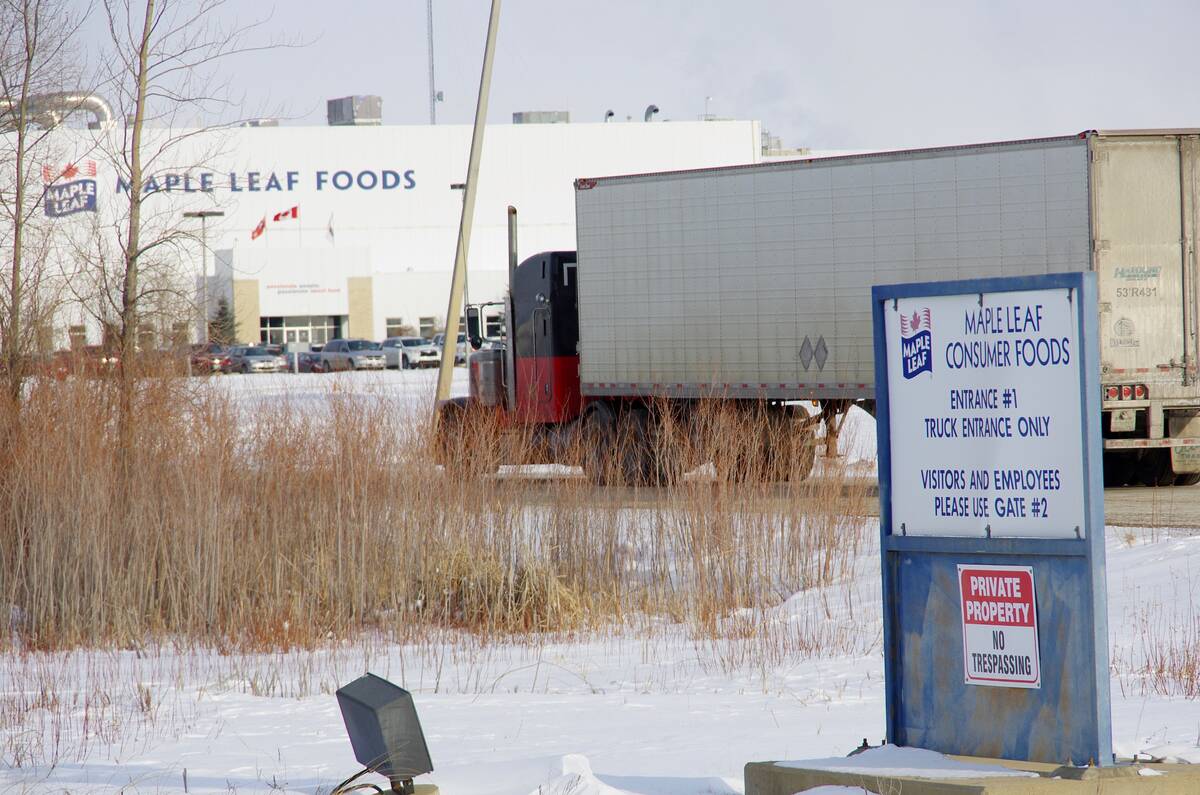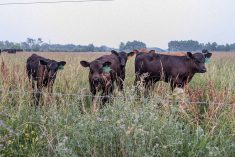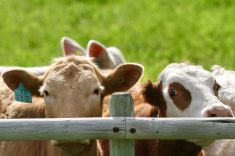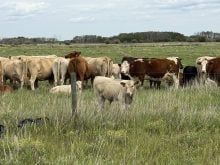OLDS, Alta. – When Hidzer Sietzema strolls over to the pasture to see his new Friesian horses, they immediately search his jacket for treats and offer friendly greetings.
Sturdy, intelligent horses with long, flowing manes and tails, these five yearlings have been on Sietzema’s Olds farm for only a month.
They are the same type of horses that carried knights into battle during the Middle Ages and pulled hearses in England during the last century. They were almost extinct by the First World War, but today are enjoying a renewed popularity.
Read Also

Manitoba pork exports gain new market ground
Manitoba’s pork trade pivoted from China over the last five years, while Japan is remains the largest customer and South Korea and Mexico market footholds have grown
Friesians come from the northern agricultural province of Friesland in the Netherlands and carry many draft horse characteristics. They are used for driving, as a pleasure horse or for light farm work.
Sietzema owns a 90-cow dairy near Olds, but as he nears retirement he is looking for something new to do. Cows pay the bills but Friesian horses give him pleasure.
“I always wanted to have them but they’re so damn expensive. But we finally took the jump,” he said.
He and his wife Fay started negotiations last September with farmers in the Netherlands. They never saw the young horses until they arrived in Toronto Feb. 21.
The Sietzema family then brought the four fillies and one colt back to Olds.
They already owned a five-year-old mare called Fiekge, which ironically, is Fay Sietzema’s Dutch name. The mare, which produced a colt last year, was bought from a Friesian horse producer in Abbotsford, B.C.
The Sietzema family immigrated from the Netherlands in 1981. They worked horses in their home province of Friesland but never owned Friesians.
Sietzema would like to build up his herd but no qualified stallions are available in British Columbia or Alberta. His mare was artificially inseminated. There are less than 1,000 Friesians in North America and less than 40 in Alberta.
Getting a horse qualified for breeding stock is painstaking. In North America, the only official representative body for this breed is the Friesian Horse Association of North America, based in Lexington, Kentucky.
The parent organization is the Friesch Paarden-Stamboek in the Netherlands.
A judging is held once a year when a qualified official of the FPS comes to evaluate horses.
Horses are judged on conformation, movement and color. They must be pure black. Only a small spot of white is allowed between the eyes. If there are other white markings, the horse is disqualified.
The horses receive a score or a premium. A score of one is the best mark and only about five percent of the stallions attain it.
The animals have long manes, tails and pronounced hair on the pasterns. They have a curving, swan type neck. Stallions must be at least 15.3 hands high and mares must stand 14.3 hands high.
Only approved stallions may be used as sires in order to register the horses.
Exports almost wiped the breed out. Cross-breeding programs from the early 1800s to the end of the First World War almost caused extinction of this horse.
The Friesian was first imported to North America in the 17th century but was lost to crossbreeding. It may be part of the Morgan horse family tree.
The next import didn’t happen until 1974 when a careful breeding program to keep the breed pure was established here.















